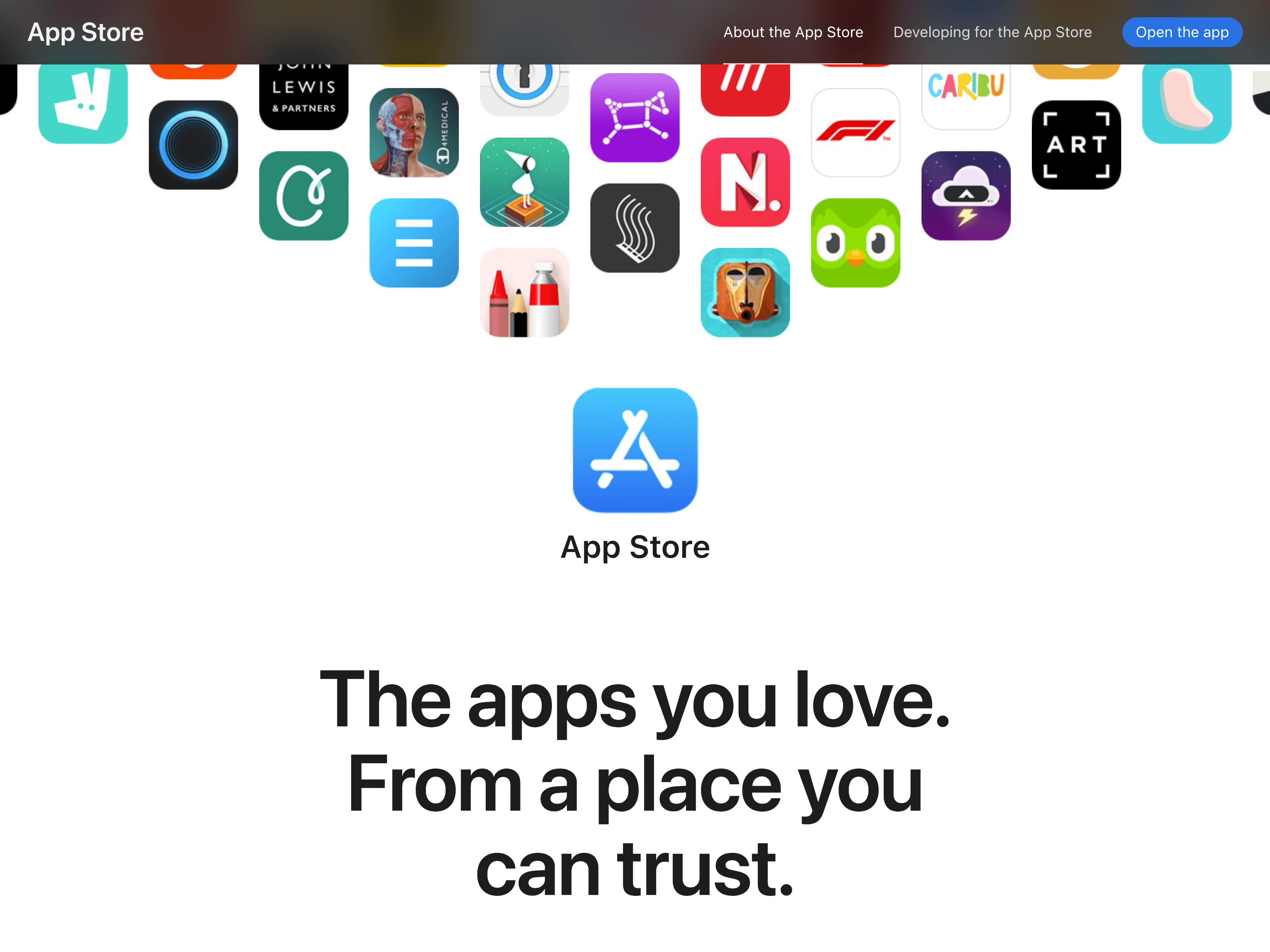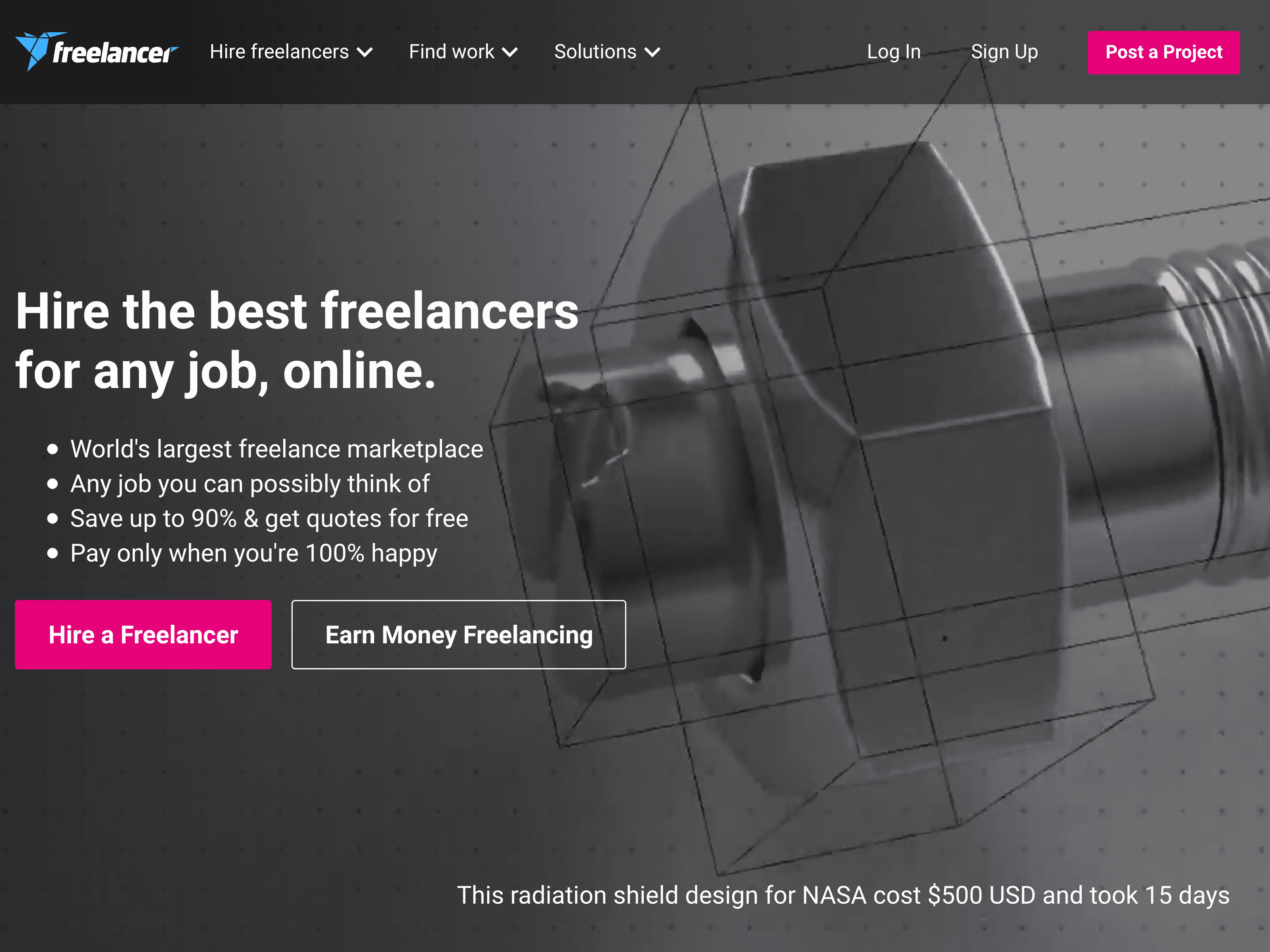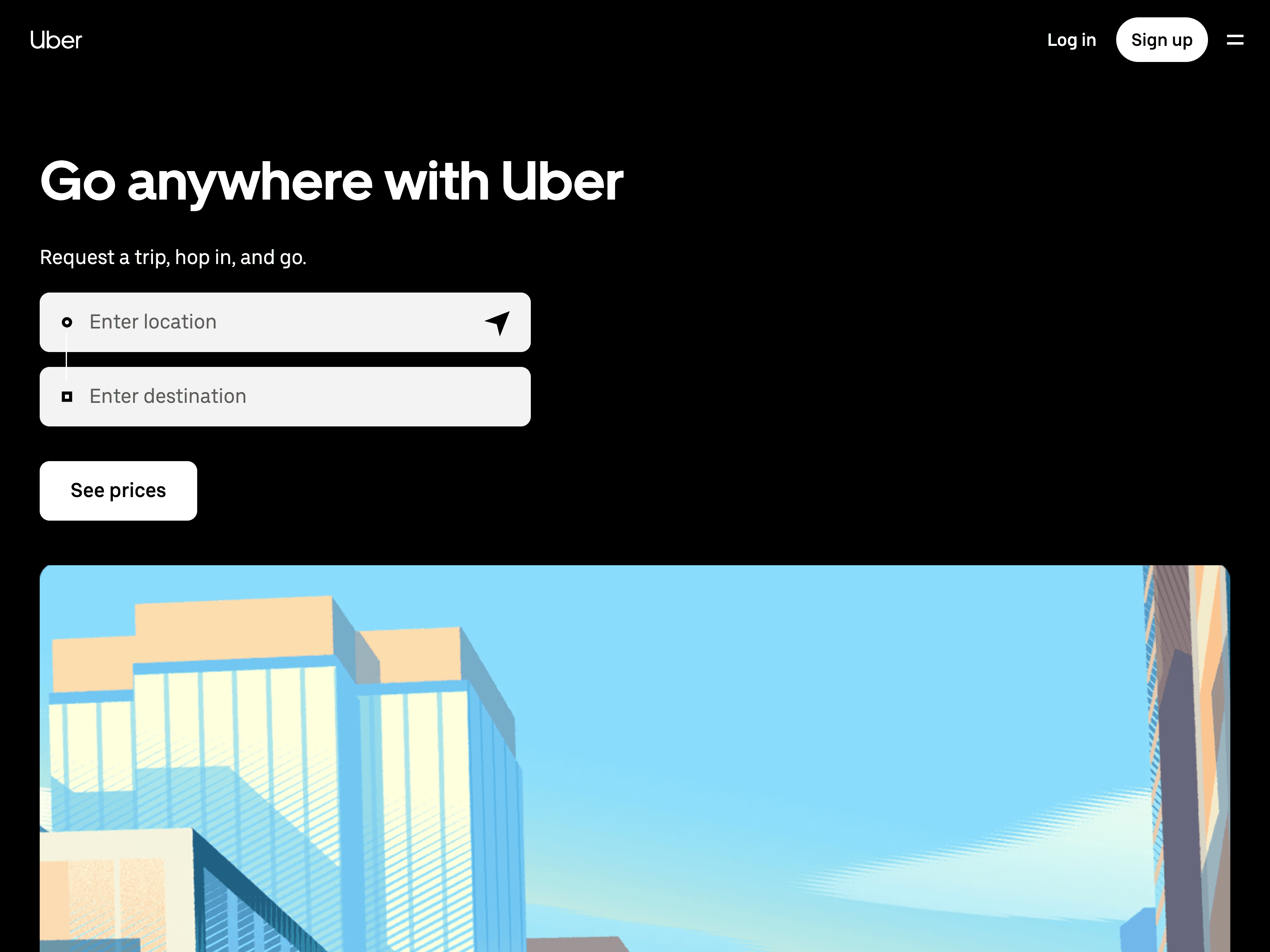Guides
The first step to building your marketplace is understanding the types of marketplaces and determining which type best aligns with your business goals and target audience. This knowledge will not only help you to strategically position your platform but also tailor its features to meet the specific demands of your users.
In this guide, we’ve categorised different types of marketplaces and provided insights on various marketplace types to give you an overall idea of where to position your marketplace.
Before deciding what type of platform you want to build, you need to define your marketplace model. Think of it like this:
Do you want to be a digital one stop shop like Amazon and Alibaba?
Or, do you want to target a specific market like Airbnb and Etsy?
To operate as a digital one stop shop, you’ll want to focus on building a horizontal marketplace model, but if you want to target a specific audience, focus on vertical marketplace models within online marketplaces.
Horizontal marketplace: wide reach, diverse offerings

A horizontal marketplace offers a wide range of products or services across multiple industries or categories, catering to a broad customer base, and is a key player in the ecommerce landscape. This type of marketplace aims to be a one-stop shop, where customers can find virtually anything they need, from everyday essentials to specialised items. The key characteristic of a horizontal marketplace is its expansive scope, which allows it to serve diverse consumer needs under a single platform.
Benefits of horizontal marketplaces:
Wide market reach: Access to a vast and varied customer base across multiple product categories.
Scaling opportunities: Potential for significant growth due to the wide array of offerings and customer demographics.
Diverse revenue streams: Ability to monetise different sectors and user interests, reducing market risk.
Cross-selling potential: Leverage customer data to cross-sell and up-sell across categories, increasing average order value.
Brand recognition: Opportunity to build a strong brand as a one-stop shop for multiple needs.
Economies of scale: Potential for cost savings in logistics and procurement due to large-scale operations.
Limitations of horizontal marketplaces:
Intense competition: High competition from other broad-ranging marketplaces trying to capture market share.
Complex operations: Challenges in managing logistics, inventory, and customer service across diverse categories.
Limited personalisation: Difficulty in offering a personalised user experience due to the vastness of the platform.
High marketing costs: Significant investment required in marketing to attract and retain a diverse customer base.
Quality control issues: Potential challenges in maintaining consistent product and service quality across all categories.
Dependency on multiple vendors: Reliance on a wide range of suppliers can lead to variability in supplier quality and reliability.
Examples of horizontal marketplaces:
Amazon: Offers a broad range of products from books and electronics to groceries and personal care items.
eBay: Global online auction and shopping website where people and businesses buy and sell a wide variety of goods and services worldwide.
Alibaba: Chinese multinational conglomerate specialising in e-commerce, retail, internet, and technology, serving various consumer needs across multiple product categories.
Walmart Marketplace: Allows sellers to list their products on Walmart’s website, which sells a wide variety of goods similar to its physical stores.
Rakuten: Japanese electronic commerce and online retailing company involved in the sale of goods across multiple sectors.
Flipkart: An Indian e-commerce company, providing a wide array of products such as electronics, home essentials, fashion, and groceries.
Vertical marketplace: niche focus, personalised touch

A vertical marketplace, in contrast, specialises in a specific industry or sector, offering products or services that are tailored to a particular niche. This focus enables the marketplace to provide a more curated and expertly tailored shopping experience. Vertical marketplaces are known for their deep understanding of their specific market, which allows them to offer specialised services or products with a higher degree of personalisation and customer engagement.
Benefits of vertical marketplaces:
Specialised focus: Ability to offer tailored products or services that meet specific industry needs.
Enhanced customer experience: Potential for a more personalised shopping experience that caters to niche audiences.
Expertise and authority: Opportunity to establish the platform as an expert or authority within a particular niche.
Higher customer loyalty: Focused offerings can lead to higher customer retention and loyalty.
Streamlined operations: Easier inventory and service management due to a narrower focus.
Community building: Potential to build a dedicated community around a specific interest or industry.
Limitations of vertical marketplaces:
Limited market size: Niche focus results in a smaller overall customer base, potentially capping growth.
Scaling challenges: Difficulties in scaling operations beyond the niche without diluting the brand’s focus.
Reliance on niche trends: Susceptibility to fluctuations within specific market sectors or trends.
Higher barriers to entry: Requires in-depth knowledge and connections within the industry to succeed.
Risk of market saturation: High risk of saturation if multiple competitors target the same niche.
Inflexibility: Less flexibility to pivot or expand offerings outside the niche without significant strategic shifts.
Examples of vertical marketplaces:
Airbnb: Specialises in lodging, homestays for vacation rentals, and tourism activities, providing a platform for people to rent out their properties or rooms to guests.
Vinted: A marketplace dedicated to second-hand fashion, allowing users to sell, buy, and swap clothing items.
Auto Trader: Specialises in the automotive sector, facilitating the buying, selling, and trading of cars.
Etsy: Targets artists, crafters, and vintage enthusiasts, offering a platform for handmade and unique goods.
Zocdoc: Focuses on the healthcare industry by connecting patients with doctors for appointments.
Houzz: Caters to home renovation and design, connecting homeowners with professionals and vendors in home improvement.
Marketplaces by audience:
B2B (Business to Business) marketplaces

B2B marketplaces connect businesses with other businesses, facilitating transactions such as the supply of raw materials, bulk product purchases, and professional services. These platforms are designed to streamline the procurement and sales processes across different industries.
Advantages:
Access to new markets: Allows businesses to expand their reach and access new geographic and demographic markets.
Cost reduction: Streamlines procurement processes, reducing costs through bulk purchasing and competitive bidding.
Efficiency in operations: Automates sales and supply chain operations, enhancing productivity.
Quality networking opportunities: Provides a platform for forging valuable industry connections that can lead to long-term partnerships.
Market insights: Offers rich data that can help businesses understand market trends and adjust their strategies accordingly.
What to think about when starting a B2B marketplace:
Sales cycles: Transactions often involve multiple stakeholders and complex deliberations
Competition: Highly competitive, making it difficult to stand out without a clear value proposition.
Integration challenges: Integrating B2B systems with existing procurement and sales software can be complex and costly.
Customer base: The focus on businesses rather than individual consumers limits the market size.
Regulatory compliance: Often subject to more stringent regulatory requirements, which can complicate transactions.
Features of B2B marketplaces:
Order management systems: To handle large orders and repeat transactions.
Rating and review systems: For accountability and quality assurance among businesses.
Multi-tier pricing options: Different pricing based on volume or membership levels.
Integrated logistics solutions: To manage and track deliveries across vast networks.
Secure payment gateways: That support large transactions and provide payment security.
Industry examples:
Alibaba
ThomasNet
TradeIndia
Global Sources
Made-in-China
Europages
B2C (Business to Consumer) marketplaces

B2C marketplaces are platforms where businesses sell goods or services directly to consumers. This model is typified by online retailers who offer a wide range of products aimed at the general public.
Advantages:
Wide customer reach: Allows businesses to reach millions of customers globally.
Brand building: Provides a platform to build and enhance brand recognition.
Consumer insights: Direct interaction with consumers enables collection of valuable data on consumer behaviour and preferences.
Scalability: Easily scalable; new products and services can be introduced to the market quickly.
Marketing synergies: Large platforms attract more visitors, which can be leveraged to introduce new products or cross-sell.
What to think about when starting a B2C marketplace:
Customer service: Handling customer queries and issues can be resource-intensive.
Competition: Standing out in a crowded marketplace can be difficult.
Evolving consumer trends: Highly susceptible to changes in consumer preferences.
Logistical challenges: Managing supply chains and deliveries can be complex, especially internationally.
Return and refund issues: High rates of returns and refunds can impact profitability.
Features of B2C marketplaces:
Customer review systems: To build trust and guide buyer decisions.
Personalised recommendations: To enhance user experience and increase sales.
Mobile optimisation: Ensuring the marketplace is accessible on smartphones and tablets.
Easy checkout processes: Streamlined to reduce cart abandonment.
Dynamic pricing tools: To adjust prices based on demand, competition, and other factors.
Industry examples:
Amazon
eBay
ASOS
Zalando
Flipkart
Jingdong (JD)
C2C (Consumer to Consumer) marketplaces

C2C marketplaces facilitate transactions between consumers, typically involving the sale of second-hand goods, handmade items, or personal services. These platforms provide a community for individuals to buy and sell among themselves.
Advantages:
Low entry barriers: Easy for individuals to list and sell goods.
Community building: Often develop a sense of community among users.
Additional income opportunities: Allows individuals to earn money from unused or handmade items.
Environmental impact: Promotes recycling and reuse of goods.
Diverse product offerings: Often features unique or rare items not available in traditional stores.
What to think about when starting a C2C marketplace:
Trust issues: Ensuring safety and trust between unknown parties can be challenging.
Quality control: There can be significant variability in product quality.
Customer support: Support and mediation in disputes are often less robust than in B2C or B2B marketplaces.
Payment security: Maintaining secure transactions can be difficult without the intermediation of a trusted third party.
Regulatory challenges: Navigating the legal implications of transactions, including tax obligations and consumer rights, can be complex.
Features of C2C marketplaces:
User profiles: Include ratings, reviews, and transaction history to build trust.
Listing and search capabilities: Enable users to easily post items and navigate the platform through advanced search features.
Payment systems: Incorporate secure transaction processing and options like escrow services.
Communication tools: Provide in-platform messaging for secure direct communication between parties.
Rating and review systems: Allow users to leave feedback post-transaction to ensure quality and reliability.
Dispute resolution services: Offer mechanisms to resolve conflicts and maintain marketplace integrity.
Industry examples:
eBay
Craigslist
Facebook Marketplace
Gumtree
Depop
Letgo
P2P (Peer to Peer) marketplaces

P2P marketplaces, a subset of online marketplaces, are platforms that facilitate the exchange of goods and services directly between individuals without the involvement of traditional business intermediaries. This model is often used for sharing or renting assets like homes, cars, or tools.
Advantages:
Cost effective: Eliminates the middleman, potentially reducing costs for users.
Flexibility: Offers more flexible terms for both providers and consumers compared to traditional rental or retail models.
Personal connection: Can create a more personal shopping or service experience.
Monetisation of assets: Enables individuals to generate income from underused assets.
Community trust: Often built around user reviews and ratings, which can enhance trust among users.
What to think about when starting a P2P marketplace:
Regulatory hurdles: May face complex legal and regulatory environments, especially in sectors like accommodation and transport.
Security risks: Risks associated with dealing directly with strangers.
Quality: Quality and reliability of products or services can vary widely.
Dispute resolutions: Resolving disputes without a central authority can be challenging.
Scalability: Scaling a P2P model can be difficult as it relies heavily on building a large network of trust.
Features of P2P marketplaces:
Real-time availability and booking systems: Manage service or rental availability with an immediate booking function.
Geolocation services: Utilise user location to facilitate connections and enhance service relevance.
Peer verification and security checks: Implement thorough user verifications and security checks for safety.
Dynamic pricing tools: Adjust prices based on demand, time, and other relevant factors.
User reviews and ratings: Feature user-generated feedback to uphold service quality.
Insurance and liability coverage: Provide protections for asset owners and users against damages or accidents.
Industry examples:
Airbnb
Turo
Peerby
Kickstarter
Etsy
Vrbo
Addressing common misconceptions around marketplaces by participants:
Navigating the landscape of marketplace models can often be confusing, as many platforms may operate under multiple models or switch between them depending on strategic needs; this underscores the importance of having a guide to different types of marketplaces. Take the example of Amazon, which demonstrates the complexity between different marketplace models quite well. Originally, Amazon started as a B2C platform, selling books directly to individual customers. Over time, it evolved to include Amazon Marketplace, a classic C2C model where individuals or small businesses sell products directly to other consumers. With this, Amazon also operates a B2B segment known as Amazon Business, which caters to the needs of business customers by offering bulk pricing, business accounts, and tax exemptions.
Furthermore, the terms C2C (Consumer to Consumer) and P2P (Peer to Peer) frequently cause confusion as they sound similar and are sometimes used interchangeably, yet they represent subtly different concepts. C2C generally refers to transactions between consumers who are acting in a personal capacity—essentially, one non-professional individual selling directly to another, typically through a facilitated platform. Examples include platforms like eBay or Craigslist, where individuals buy and sell items ranging from electronics to furniture.
P2P, while similar, emphasises the peer aspect and is often used to describe services or sharing-based transactions rather than just sales. For example, P2P is commonly associated with platforms like Airbnb or Turo, where the focus is on individuals sharing access to assets such as homes or cars with other individuals. This model extends beyond buying and selling to include renting, borrowing, or sharing, making it distinct from the typical buy/sell dynamic found in C2C.
Marketplaces by products
Marketplaces can be broadly classified based on the type of products they offer—ranging from tangible goods to intangible services and digital content. Understanding these categories helps in pinpointing the operational focus and potential customer base of a marketplace. Let’s explore these further:
Physical goods marketplaces

Physical goods marketplaces are platforms where tangible products are bought and sold. These can include a diverse array of items such as clothing, accessories, food, electronics books, and beauty products. These marketplaces often require robust logistics for inventory, shipping, and returns management.
Examples of physical goods marketplaces:
Amazon: Offers a range of products, from household items to tech gadgets, with a global logistics network.
Etsy: Specialises in handmade or vintage items and craft supplies, catering to niche markets.
eBay: Allows users to buy and sell a wide variety of goods, from new products to second-hand items.
Walmart: Operates both online and in physical stores, offering groceries, apparel, and more.
Advantages:
Wide consumer base: Access to customers looking for tangible products, which can be a very broad market.
Pricing flexibility: Ability to leverage sales, discounts, and shipping options to attract customers.
Potential for repeat business: Physical goods like clothing, food, and cosmetics often lead to repeat purchases.
Enhanced branding opportunities: Physical packaging and the product itself can enhance brand recognition and loyalty.
What to think about when starting a physical product marketplace:
Logistics and inventory management: Requires substantial management of inventory, warehousing, and shipping, which can be complex and costly.
Operational costs: Costs related to physical stock, such as storage and shipping, can be significant.
Returns and exchanges: High rates of returns and the logistical complexity of managing them can be challenging.
Quality assurance: Ensuring consistent quality and dealing with damaged goods are potential issues.
Features of physical product marketplaces:
Inventory management: Systems to manage stock levels, handle order fulfilment, and update product availability in real-time.
Shipping integration: Tools to automate shipping processes, track shipments, and calculate shipping costs dynamically based on size, weight, and destination.
Product categorisation: Categorisation features to help customers easily browse and find products through filters and search functionalities.
Customer reviews and ratings: Allows customers to leave feedback on products they've purchased, which helps build trust and guide future buyers.
Return and refund management: Automated systems to handle customer returns and refunds efficiently, maintaining customer satisfaction and trust.
Digital product marketplaces

These platforms focus on the distribution of digital goods, such as software, ebooks, music, and more.
Examples of digital product marketplaces:
Apple app store/Google play store: Marketplaces for mobile applications, offering a vast range of apps for various purposes and interests.
Steam: A digital distribution platform for video games, providing a centralised hub for gamers to purchase and download titles.
Gumroad: Enables creators to sell digital products directly to their audience, including ebooks, courses, and software.
Advantages:
Low overhead costs: Minimal costs for storage and distribution, as products are digital.
Instant delivery: Products like software, music, or e-books can be delivered instantly, enhancing customer satisfaction.
Global reach: Digital goods can be sold worldwide without additional costs, expanding the market potential.
Scalability: Easy to scale as demand increases, without needing to worry about inventory or restocking which also makes it a sustainable model.
What to think about when starting a digital product marketplace:
Piracy risks: Digital goods are susceptible to unauthorised sharing and piracy.
Customer engagement: Absence of a physical product can limit customer engagement and brand presence.
Market saturation: Easy entry can lead to a flooded market, especially in popular categories like apps and ebooks.
Challenges in valuation: Customers might undervalue digital goods due to their intangible nature.
Features of digital product marketplaces:
Instant delivery: The ability to download or access purchased digital goods immediately after payment.
Licensing management: Tools to manage digital rights and ensure compliance with licensing agreements for software, music, eBooks, etc.
Secure payment gateways: Encrypted transaction processes that safeguard sensitive financial information.
Preview capabilities: Allows users to view samples or demos of digital products like snippets of music, video previews, or software trials.
User access control: Systems to control and monitor who can access purchased digital content and on which devices.
Content marketplaces

Content marketplaces can be considered a subset of digital product marketplaces, but they often operate with distinct characteristics and cater to different types of offerings. Some key differences include:
Product scope: Content marketplaces focus specifically on media and content whilst digital product marketplaces include a wider range of products including software, games, and tools.
Purpose of use: The products in content marketplaces are primarily for consumption (listening, watching, reading), whereas digital product marketplaces often include products used for creating, performing, or enhancing other tasks (Apple App Store, Github, Steam).
Creator demographics: Content marketplaces typically cater to creatives like artists, writers, and educators, whereas digital product marketplaces might also cater to developers, tech companies, and other professional service providers.
Examples of content marketplaces:
Shutterstock: A platform for photographers and artists to sell stock photos, illustrations, and videos to businesses and individuals.
Udemy: An online course platform that offers a range of educational material.
Youtube: a video sharing platform to watch or create online videos.
Medium: A platform where writers can publish articles or stories and can monetise this based on reader engagement or subscriptions
Advantages:
Scalable business model: Digital content such as can be sold repeatedly without the need for additional inventory.
Diverse revenue streams: A content marketplace can generate revenue from multiple sources, including direct sales, subscriptions, advertising, and affiliate marketing.
Global market access: Digital content is not restricted by geographical boundaries.
Community and creator empowerment: Platforms that support content creators can build vibrant communities around shared interests.
What to think about when starting a content marketplace:
Monetisation: Creators and the marketplace need to balance content accessibility and profitability, which can involve experimenting with different pricing models and revenue-sharing arrangements.
Content piracy and copyright issues: Digital content is susceptible to unauthoriSed sharing and piracy.
Competition: The digital content market is highly competitive, with many established players like YouTube, Udemy, and others dominating certain niches.
Technological infrastructure: A content marketplace depends heavily on its platform's usability, thus, any downtime or glitches can significantly affect user experience and trust.
Content monetisation options: Various ways for creators to earn money from their content, including subscriptions, pay-per-view, or ad-based revenue.
Analytics and reporting: Detailed insights into how content is performing, viewer demographics, and engagement metrics to help creators refine their offerings.
Community engagement tools: Features that allow users to comment, like, and share content within the platform and on social media.
Creator profiles and portfolios: Dedicated spaces for content creators to showcase their work and share their professional background and achievements.
Personalised recommendations: Algorithms that suggest content to users based on their viewing history and preferences to increase engagement.
Service marketplaces

Service marketplaces connect individuals or businesses seeking specific services with providers offering their expertise. Here are some of the different types:
Freelance platforms: Platforms like Upwork and Freelancer.com allow freelancers to offer their services in fields such as writing, design, programming, and more.
Home services marketplaces: Platforms such as TaskRabbit and Thumbtack connect users with local service providers for tasks like home cleaning, plumbing, and handyman services.
Professional services networks: LinkedIn ProFinder and Xpertly cater to professionals seeking services like consulting, coaching, and legal assistance, connecting them with qualified experts.
Educational marketplaces: Platforms like Udemy and Coursera offer online courses and educational resources on a wide range of subjects, connecting instructors with students globally.
Event and experience marketplaces: Airbnb Experiences and Eventbrite provide platforms for individuals and businesses to offer unique events, tours, and experiences to a global audience.
Transportation services marketplaces: Platforms like Uber and Lyft provide ridesharing services for passengers with drivers through a mobile app.
Food delivery services marketplaces: DoorDash and Grubhub are examples of food delivery platforms that connect users with local restaurants for online ordering and delivery.
Pet services marketplaces: Wag! And Rover are platforms that connect pet owners with dog boarding and pet sitting services.
Healthcare services marketplaces: Zocdoc and Doctor on Demand provide healthcare services connecting patients with medical professionals through virtual consultation.
Advantages:
Diverse market opportunities: Services can range from professional tasks like graphic design to personal services like home cleaning.
Low entry barriers: Providers can join the platform with minimal upfront investment.
Flexible work options: Attractive for freelancers and professionals looking for flexible work arrangements.
High potential margins: Services can command high prices based on expertise and customization.
What to think about when starting a service marketplace:
Quality control: Ensuring consistent service quality across different providers can be difficult.
Dependency on provider skill: Success heavily relies on the skills and reliability of service providers.
Scalability: Scaling requires a continuous influx of skilled providers, which can be a bottleneck.
Regulations: Many services, especially those like health and legal advice, are heavily regulated.
Features of service marketplaces:
Booking and scheduling: Integrated tools that allow customers to book and schedule services at their convenience.
Service provider reviews and ratings: Feedback systems that help new customers choose providers based on past customer experiences.
Geolocation features: Services can be searched and booked based on proximity, enhancing local business visibility.
Payment integration: Secure payment systems that handle transactions directly within the platform, ensuring smooth financial operations.
Custom service listings: Ability for providers to create and customise their service listings with detailed descriptions, pricing, and availability.
Labour marketplaces

Labour marketplaces typically fall under the broader category of service marketplaces. While labour marketplaces and service marketplaces share similarities in connecting buyers with providers to fulfill specific needs, they often differ in the types of services offered, with labour marketplaces focusing more on physical tasks and service marketplaces, including ecommerce platforms, dealing often with digital solutions and products. Here’s a breakdown of the main differences between the two marketplace types:
Labour marketplaces focus on:
Human capital: Labour marketplaces primarily focus on connecting buyers with individuals who provide labour or physical work. This can include tasks such as home repairs, cleaning, moving, gardening, and other manual or skilled labour.
Task-based or gig-oriented: Many labour marketplaces operate on a task-based or gig-oriented model, where providers offer their services for short-term, one-time tasks or projects. Examples include TaskRabbit for odd jobs and Handy for home services.
Localised services: Labour marketplaces often facilitate transactions between buyers and providers who are geographically close to each other, as many services require physical presence or proximity.
Examples of labour marketplaces:
TaskRabbit: Connects users with local service providers for various tasks such as furniture assembly, home repairs, cleaning, and moving.
Handy: Offers on-demand home services including cleaning, plumbing, electrical work, furniture assembly, and more, connecting users with vetted professionals in their area.
Thumbtack: Allows users to find and hire local professionals for a wide range of services including home improvement, event planning, personal training, photography, and more.
Rover: Connects pet owners with dog walkers, pet sitters, and boarding services, enabling individuals to find trusted care for their pets while they are away.
On the other hand, service marketplaces focus on:
Skill-based matching: Service marketplaces tend to focus more on matching buyers with providers based on specific skills, expertise, or qualifications rather than solely on physical labour.
Diverse range of services: Service marketplaces include a broader range of services beyond labour or physical work, often encompassing ecommerce services such as online consulting, digital marketing, and virtual assistance. This can include professional services like consulting, legal assistance, accounting, marketing, graphic design, programming, writing, and more.
Flexibility and specialisation: Service marketplaces offer flexibility for providers to offer their expertise in various domains, allowing for specialisation in niche areas and catering to diverse client needs.
Digital services: While some service marketplaces may also facilitate in-person services, many operate in the digital realm, connecting remote freelancers with clients worldwide. Platforms like Upwork, Freelancer.com, and Fiverr fall under this category.
Features of labour marketplaces:
Profile verification: Mechanisms to verify the credentials, skills, and backgrounds of job seekers to ensure reliability and trustworthiness.
Job matching algorithms: Algorithms to match the right candidates with the right job postings based on skills, experience, and other relevant criteria.
Real-time communication: Messaging tools that allow employers and potential employees to communicate directly and efficiently.
Feedback and rating systems: Enables both employers and workers to rate each other post-engagement, fostering a quality-centric environment.
Contract and payment tools: Integrated systems to handle contract management and ensure timely payments upon job completion.
Marketplaces by interaction
Marketplaces by interaction refer to the ways in which transactions are facilitated and the methods through which buyers and sellers engage with each other. Different types of interactions can lead to unique dynamics and experiences in a marketplace. Let’s explore the main forms of interaction of marketplace models:
Auction-based marketplaces

In auction-based marketplaces, goods or services are sold through a bidding process. Sellers list items, and buyers place bids within a specified period. The highest bidder at the end of the auction period wins the item.
Advantages:
Price discovery: Allows for real-time price discovery which can lead to higher prices, especially with rare or in-demand items.
High engagement: The competitive bidding process can increase user engagement and time spent on the platform.
Market efficiency: Auctions can be an efficient way to sell items quickly and at true market value.
Flexibility: Sellers can set reserve prices to ensure items do not sell below a minimum value.
What to think about when starting an auction-based marketplace:
Design complexity: Implementing an effective and fair bidding system requires careful planning and robust technology.
Fraud prevention: Must have strict measures to prevent bid manipulation and ensure user authenticity.
User experience: The interface needs to be user-friendly to keep both buyers and sellers active and engaged.
Legal and regulatory compliance: Must comply with regulations regarding auctions, which can vary significantly by region or type of goods.
Features of auction-based marketplaces:
Real-time bidding interface: Allows users to bid in real-time and see current bid status immediately.
Automatic bid increments: Automatically adjusts bids based on pre-set criteria to improve the bidding process.
Reserve prices: Sellers can set a minimum sale price to ensure the item does not sell for less than its worth.
Time-limited auctions: Auctions end at a specific time, increasing urgency among bidders.
Notification systems: Alerts users when they are outbid or when an auction is about to close.
Bid history: Provides transparency by allowing users to view previous bids and bidders.
Examples include:
eBay
Sotheby’s
Christie's
Heritage Auctions
On-demand marketplaces

On-demand marketplaces provide goods or services immediately or on short notice. These platforms typically connect consumers with local service providers who can fulfil immediate needs.
Advantages:
Convenience: Provides immediate or rapid service to users, enhancing customer satisfaction.
Efficiency: Optimises the supply chain and logistics for quick service delivery.
Scalability: Can expand to new regions and services as demand increases.
Flexible employment: Offers service providers flexible working conditions
What to think about when starting an on-demand marketplace:
Quality control: Maintaining consistent service quality across numerous independent providers is challenging.
Technology dependence: Requires sophisticated technology and algorithms to match supply with demand effectively.
Customer service: Must offer robust support systems to handle complaints and issues promptly.
Regulatory challenges: Often faces stricter regulatory scrutiny, especially in sectors like transportation and food delivery.
Features of on-demand marketplaces:
Geolocation tracking: For matching consumers with the nearest service providers.
Dynamic pricing: Prices can vary based on demand, time of day, or other factors.
User profiles and reviews: Essential for building trust and ensuring quality.
Instant payment processing: Facilitates seamless transactions between parties.
Real-time availability status: Providers can update their availability in real-time.
Customer and provider dashboards: For managing orders, history, and personal settings.
Examples include:
Uber
Lyft
DoorDash
Postmates
Community-driven marketplaces

These marketplaces focus heavily on building a community around the products or services offered. They often include social features such as forums, reviews, and user-generated content, encouraging interaction and engagement among users.
Advantages:
User loyalty: Strong community ties enhance user retention and loyalty.
Content rich: User-generated content can enhance the platform’s value and SEO.
Peer recommendations: Community endorsements can drive sales and trust.
Niche markets: Effectively serves niche markets with dedicated user bases.
What to think about when starting a community-driven marketplace:
Community management: Requires active moderation and management to foster a positive environment.
User engagement: Needs features and incentives to keep users active and engaged.
Scalability: Growing the community while maintaining a quality user experience can be difficult.
Monetisation: Finding the right balance between community feel and commercial goals is crucial.
Features of community-driven marketplaces:
Forums and discussion boards: For user interaction and support.
Review and rating systems: Users can rate products or services and write reviews.
Social sharing tools: Easy sharing of content and listings to social media platforms.
Event and meetup tools: For organising and promoting community events.
Member profiles: Detailed profiles that encourage community interaction.
Customisable user feeds: Tailored content feeds based on user interests and interactions.
Examples include:
Etsy
Kickstarter
Goodreads
Ravelry
Subscription-based marketplaces

Subscription marketplaces charge a regular fee for continued access to a platform. This model is better suited if the marketplace doesn’t have the resources to manage transactions between users or does not want to.
Advantages:
Predictable revenue: Subscription models provide a steady and predictable revenue stream from recurring payments, which is also attractive to investors as they have an idea of your monthly revenue.
Customer loyalty: Encourages longer-term customer relationships and retention.
Data collection: Enables rich data collection on user preferences and behaviour for better targeting and personalization.
Scalability: Easily scalable, as adding new subscribers generally doesn't require substantial additional resources.
What to think about when starting a subscription-based marketplace:
Customer expectations: Subscribers will want high-quality and consistent service, increasing pressure on the platform.
Churn rate management: Maintaining and growing the subscriber base requires ongoing effort and innovation to reduce churn.
Subscription fatigue: As consumers subscribe to more services, convincing them to add another can be challenging.
Value justification: It’s important to continuously communicate value to prevent subscribers from cancelling.
Features of subscription-based marketplaces:
Automated renewal systems: Efficient systems for handling recurring payments and subscription renewals.
Customer account management: Robust account management features allowing users to easily upgrade, downgrade, or cancel services.
Personalisation engines: Use of AI and data analytics to personalise content.
Exclusive features: Providing subscribers with access or perks that are not available to non-subscribers.
Engagement metrics tracking: Tools to monitor user engagement and identify potential churn risks.
Multi-tier subscription options: Offering various levels of subscriptions to cater to different user needs and price sensitivities.
Examples include:
Netflix
Spotify
Adobe Creative Cloud
Amazon Prime
Final words
In exploring the diverse landscape of marketplaces, we've delved into classifications based on audience, products, and interactions—each offering unique opportunities and challenges.
Marketplaces by audience explore the relationship dynamics whether between businesses, consumers, or peers highlighting the varying needs and expectations within each model. Marketplaces by products focus on what is being exchanged, from tangible goods like electronics and clothing to intangible services and digital content. And finally, marketplaces by interaction underscore how transactions are facilitated.
As you consider building your own marketplace, reflect on these categories to identify which structure aligns best with your business vision and target audience. Consider the operational demands, the market potential, and where your passion lies as your choice will shape the technologies you deploy, the acquisition strategy you develop, and the customer experiences you design. After deciding this, we recommend you start by building a minimum viable product (MVP) to test key functionality and iterate based on user feedback. This way you’ll create a marketplace that meets your target audience’s expectations without building unnecessary features.
